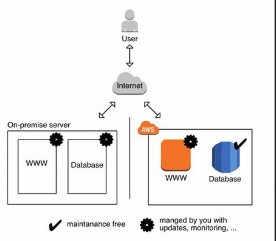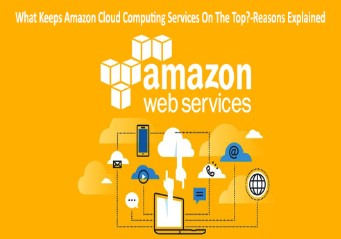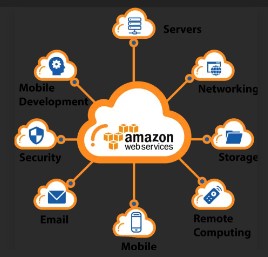Amazon Aws Website Hosting
In recent years, the landscape of website hosting has undergone a significant transformation, with businesses increasingly shifting towards cloud hosting solutions. This shift represents a fundamental change in how websites are hosted and managed, offering unparalleled flexibility, scalability, and reliability.
Understanding the nuances of cloud hosting and why Amazon AWS stands out in this arena is crucial for businesses looking to harness the full potential of the cloud.
Understanding the Shift to Cloud Hosting
Traditional hosting solutions often rely on physical servers housed in data centers, which can be costly to maintain and scale. In contrast, cloud hosting leverages virtualized infrastructure, allowing businesses to access computing resources on-demand and pay only for what they use. This paradigm shift offers greater agility and cost-effectiveness, making it an attractive option for businesses of all sizes.
Why Amazon AWS Stands Out in Website Hosting
Among the myriad of cloud hosting providers, Amazon Web Services (AWS) has emerged as a leader, offering a comprehensive suite of services tailored to the unique needs of website hosting.
With a global network of data centers, advanced security features, and a vast ecosystem of tools and services, AWS provides businesses with the scalability, reliability, and performance required to succeed in today’s digital landscape.
Getting Started with Amazon AWS Hosting
Navigating the AWS Management Console
The AWS Management Console serves as the central hub for managing your AWS resources. From provisioning new instances to monitoring performance metrics, the console provides a user-friendly interface for accessing and managing your AWS environment.
Choosing the Right AWS Hosting Plan for Your Website
AWS offers a variety of hosting plans to suit different needs and budgets. Whether you’re hosting a small personal blog or a high-traffic e-commerce site, there’s a plan that fits your requirements. Understanding the various options available, such as EC2 instances, Lightsail, and Elastic Beanstalk, is key to selecting the right plan for your website.
Setting Up Your AWS Account and IAM Users
Before diving into AWS hosting, it’s essential to set up your AWS account and configure Identity and Access Management (IAM) users. IAM allows you to control access to your AWS resources securely, ensuring that only authorized users can make changes to your environment.
The Core Components of Amazon AWS Hosting
Exploring Amazon EC2 Instances: Virtual Servers in the Cloud
Amazon Elastic Compute Cloud (EC2) provides resizable compute capacity in the cloud, allowing you to launch virtual servers, known as instances, with just a few clicks. EC2 instances come in various sizes and configurations, making it easy to tailor your infrastructure to meet the demands of your website.
Leveraging Amazon S3 for Scalable Storage Solutions
Amazon Simple Storage Service (S3) is a highly scalable object storage service designed to store and retrieve any amount of data from anywhere on the web. S3 offers durability, availability, and scalability, making it an ideal solution for hosting static website files, media assets, and backups.
Understanding Amazon RDS for Managed Relational Databases
Amazon Relational Database Service (RDS) simplifies the process of setting up, operating, and scaling relational databases in the cloud. With support for popular database engines like MySQL, PostgreSQL, and SQL Server, RDS enables you to deploy robust, high-performance databases for your website with ease.
Deploying Your Website on Amazon AWS
Launching and Configuring Your EC2 Instance
Once you’ve selected your EC2 instance type and configured your security settings, it’s time to launch your instance and deploy your website. Whether you’re hosting a WordPress blog, an e-commerce store, or a custom web application, EC2 provides the flexibility and scalability you need to get your website up and running quickly.
Uploading and Managing Website Files on Amazon S3
With your EC2 instance up and running, it’s time to upload your website files to Amazon S3. S3 provides a simple and cost-effective way to store and serve static content, such as HTML, CSS, and JavaScript files. By hosting your static assets on S3, you can offload the burden of serving static content from your EC2 instance, improving performance and scalability.
Configuring and Connecting to Your Amazon RDS Database
If your website relies on a database backend, such as MySQL or PostgreSQL, you can use Amazon RDS to deploy and manage your database in the cloud.
After creating your RDS instance, you’ll need to configure your website to connect to your database using the appropriate connection string and credentials. With RDS, you can easily scale your database to handle growing workloads and ensure high availability and reliability for your website.
Optimizing Performance and Security
Implementing Load Balancers and Auto Scaling for High Availability
To ensure your website remains available and responsive, even during periods of high traffic, consider implementing load balancers and auto-scaling groups.
Load balancers distribute incoming traffic across multiple EC2 instances, while auto-scaling groups automatically adjust the number of instances based on demand, ensuring your website can handle sudden spikes in traffic without downtime or performance degradation.
Securing Your AWS Environment with IAM Policies and Security Groups
Security is paramount when hosting a website in the cloud. AWS provides a range of tools and services to help you secure your environment, including IAM policies and security groups. IAM policies allow you to control access to your AWS resources, while security groups act as virtual firewalls, controlling inbound and outbound traffic to your EC2 instances.
By implementing robust security measures, you can protect your website from cyber threats and ensure the confidentiality, integrity, and availability of your data.
Monitoring and Managing Performance with Amazon CloudWatch
Amazon CloudWatch provides a comprehensive monitoring and management solution for your AWS resources. With CloudWatch, you can collect and analyze metrics, set alarms to notify you of performance issues and automate responses to events.
By monitoring key metrics like CPU utilization, disk I/O, and network traffic, you can identify and address performance bottlenecks before they impact your website’s availability and user experience.
Scaling Your Website with Amazon AWS
Scaling Vertically vs. Horizontally: Understanding Your Options
When it comes to scaling your website, you have two primary options: vertical scaling and horizontal scaling. Vertical scaling involves increasing the size or capacity of your existing EC2 instances, while horizontal scaling involves adding more instances to distribute the workload. Understanding the pros and cons of each approach is key to designing a scalable and resilient architecture for your website.
Utilizing AWS Elastic Beanstalk for Automated Deployment and Scaling
AWS Elastic Beanstalk is a fully managed service that makes it easy to deploy and manage applications in the cloud. With Elastic Beanstalk, you can quickly deploy your website using pre-configured environments, automate the deployment process with continuous integration and continuous deployment (CI/CD) pipelines, and scale your application automatically based on demand.
By leveraging Elastic Beanstalk, you can streamline the deployment and scaling process, allowing you to focus on building and improving your website.
Integrating CDN Services for Global Content Delivery
Content Delivery Networks (CDNs) help improve the performance and reliability of your website by caching content at edge locations around the world. By serving content from geographically distributed edge locations, CDNs reduce latency and improve load times for users accessing your website from different regions.
Integrating a CDN with your AWS hosting environment is a cost-effective way to improve the user experience and ensure fast, reliable access to your website’s content, regardless of where your users are located.
Cost Optimization Strategies
Understanding AWS Pricing Models: Pay-As-You-Go vs.





